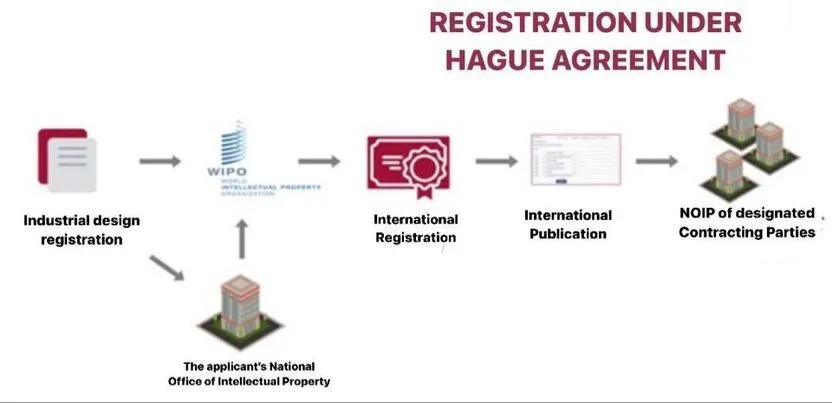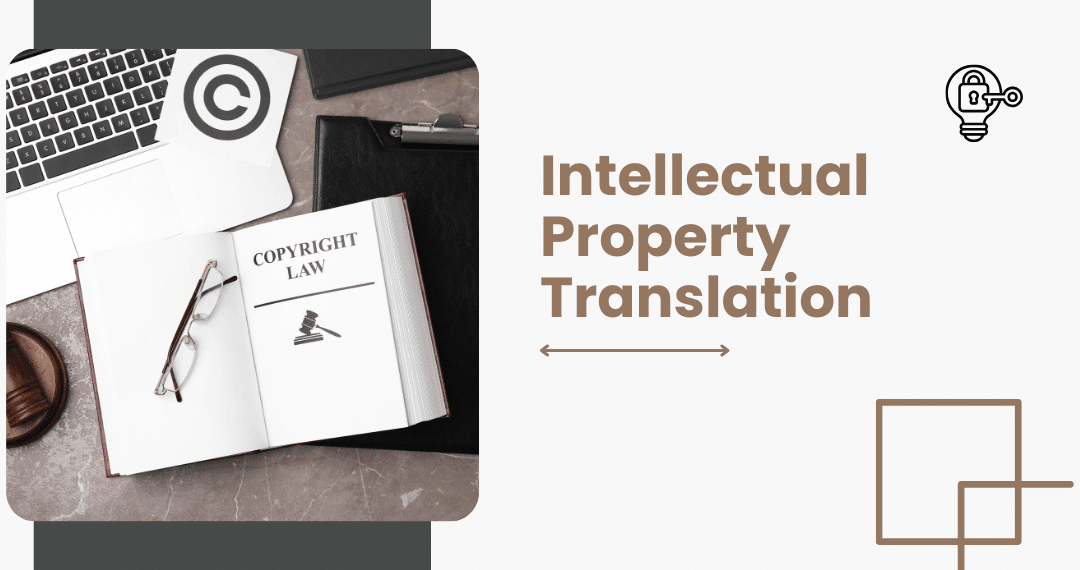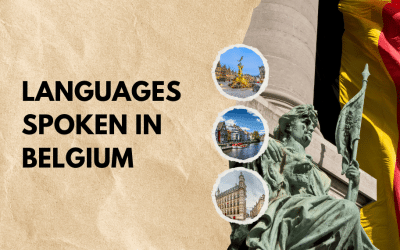Intellectual Property Rights (IPR) play a pivotal role in fostering innovation, creativity, and economic growth by facilitating the protection of intellectual assets.
This boosts regional and global competitiveness and ensures fairness and transparency among all parties involved.
In today’s globalized economy, competition is unavoidable. Securing Intellectual Property Rights can be essential to your company’s success.
Different regions have different regulations and legal procedures. These can vary depending on the country and the local and international jurisdictions.
Companies are often required to submit translations of various Intellectual Property (IP) related documents.
In the following blog, we’ll delve into the importance of IP translation, which, as you might have guessed, is essential in achieving global rights to your IP.
Looking for IPR translation services ?
Milestone works with native translators with domain expertise to accurately translate your Intellectual property documents in 70+ languages. We provide translation certificates accepted by authorities across the globe.
Intellectual property and intellectual property rights
Intellectual property (IP) refers to any creation of the mind. This includes inventions, literary and artistic works, and designs, but also any original names, images, and symbols used in commerce.
IP is legally protected through patents, copyrights and trademarks. These enable people or companies to gain recognition or to financially profit from their inventions and/or creations.

There are different types of IP, such as patents, trademarks, copyrights, and trade secrets. Each type of IP has its characteristics and its application procedure.
All four types of IP, however, have the same purpose – to protect creators and their creations.
What’s more, IP can be sold, bought, or leased out. Any unauthorized actions against IP are considered a violation of IP.
IP violations can include:
- creating logo or packaging similar to an original product to imitate the original brand and/or confuse customers;
- utilizing copyrighted materials, such as music, videos, graphic materials, etc., without permission;
- copying an already existing patent and presenting it as brand new, etc.
It’s important to mention that any violation of IP, such as infringement, counterfeiting, and misappropriation of trade secrets, has legal consequences.
Overall, IP and IP rights aim to protect the interests of innovators by granting them exclusive rights to their creations. Only in this way can IP systems foster the ideal environment for innovation, creativity, and originality to thrive.
Why is intellectual property translation necessary?

Intellectual property translation is necessary for several key reasons:
Global protection: To secure IP rights in multiple countries, the relevant documents related to patent applications, trademarks, copyrights, etc. must be submitted in the official languages of the local jurisdictions. In this regard, accurate translation ensures that the protection is recognized and enforceable locally and internationally.
Compliance with local laws: Legal requirements and regulations regarding IP can vary across different countries. Accurate IP translation ensures compliance with local laws, rendering the IP application process smooth and efficient.
Market expansion: Companies expanding into foreign markets need to ensure that their IP is well-protected. Translating IP documents is the best way to secure rights and prevent infringement in new markets.
Transparency in partnerships: When entering into partnerships or legal agreements with foreign entities, IP translation can offer transparency by providing clearly defined terms and conditions to protect the interests of all stakeholders.
Investor confidence: Investors are more likely to cooperate and invest in companies with well-protected IP portfolios. Translated IP documents showcase commitment to maintaining and securing the company’s IP, which can in turn boost investor confidence.

Also read: User Agreement Translation: Why Should Companies Do It?
Which IP documents require translation?

When it comes to IP, translation is often the only way to ensure legal protection, compliance, and effective communication across different jurisdictions.
Here are the key IP documents that typically require translation:
Patent applications, such as patent specifications, claims, abstracts, drawings and diagrams, prior art references, and examination reports.
Trademark documents, including trademark applications, descriptions of goods and services, evidence of use, opposition and cancellation proceedings, and legal opinions and rulings.
Legal documents and contracts, such as IP assignment agreements, joint venture agreements, and partnership agreements involving IP.
Copyright documents, such as registration applications, literary and artistic works (e.g., books, scripts, music lyrics), licensing agreements, copyright infringement notices, etc.
Regulatory and compliance documents, including filings with IP offices, responses to office actions, documentation for IP audits, etc.
Industrial design documents, such as design applications, descriptions and representations of the design, and certificates of registration.
Legal documents and contracts, such as IP assignment agreements, joint venture agreements, and partnership agreements involving IP.
Trade secret documents, including non-disclosure agreements (NDAs), confidentiality agreements, internal documentation detailing trade secrets, etc.
Licensing agreements, including contracts outlining the terms of IP use, royalty agreements, cross-licensing agreements, etc.
Geographical indications, including registration applications, specifications of the geographical indication, evidence of the product’s origin and characteristics, etc.
Litigation documents, such as court filings and pleadings, expert reports and affidavits, and judgments and court orders.
Marketing and promotional materials, brochures and catalogs featuring patented products or trademarks as well as advertising materials protected by copyright.
Overall, the accurate translation of these IP-related documents is of paramount importance for securing and enforcing IP rights.
International IP laws and Regulations Requiring Translations
International IP laws and regulations often require the translation of IP documents. IP translation can ensure proper legal protection, compliance with local laws, and enforcement across different jurisdictions.
Here are some key international IP laws and regulations as well as the types of IP-related documents they typically require to be translated:
European Patent Convention (EPC)
The EPC provides a framework for obtaining patents in different European countries through a single application.
This regulation requires the submission of translated European patent applications, claims, descriptions, and abstracts. These documents must be translated into the official languages of the European Patent Office (EPO) and the designated member states.

Also read: Legal Translation : Importance, Challenges & Best Practices
Madrid System for International Trademark Registration
The Madrid System for International Trademark Registration allows for the registration of trademarks in multiple countries through a single application.
Keep in mind that international trademark applications, descriptions of goods and services, and evidence of use must be translated into the required languages of the designated member countries.
Hague System for the International Registration of Industrial Designs
This system provides a mechanism for registering industrial designs in multiple countries.
Documents, including international design applications, descriptions, and representations of the design must be translated into the required languages of the designated member countries.

Berne Convention for the Protection of Literary and Artistic Works
The Berne Convention provides a mechanism for copyright protection across member countries.
Copyright registration applications, literary and artistic works, and licensing agreements need to be translated to ensure protection and enforcement in different jurisdictions.
Patent Cooperation Treaty (PCT)
The PCT is an international treaty that streamlines the process of filing patents in multiple countries.
Typically, documents, such as international patent applications, descriptions, claims, and abstracts must be translated into the official language(s) of the designated countries where protection is sought.
Agreement on Trade-Related Aspects of Intellectual Property Rights (TRIPS)
TRIPS is a regulation that sets minimum standards for IP protection and enforcement. All member countries of the World Trade Organization (WTO) must follow the standards set by TRIPS.
In the case of TRIPS, companies must provide translations of various IP-related documents, including patent applications, trademark registrations, and copyright works to comply with the legal requirements of the different countries.

Also read: Legal Translation – 6 Practical Tips for Translating Legal Documents
National IP Laws and Regulations
Individual countries have their IP laws and regulations that require translation of IP documents to the local official language(s).
In the case of national IP laws and regulations, it’s hard to pin down which documents must be translated. Thus, in such cases, detailed research is required.
Regional IP Systems
The African Intellectual Property Organization (OAPI) and the African Regional Intellectual Property Organization (ARIPO) are among the most well-known regional IP systems that have specific requirements for translating IP documents.
According to their requirements, patent and trademark applications, industrial design registrations, and related documents must be translated into the official languages of the regional IP offices.
Overall, regardless of the framework or mechanism one opts for, accurate translation of IP-related documents is essential to ensure compliance with international and national IP laws and regulations.
What’s more, the proper translation of the relevant documents would ensure the protection of IP rights as well as smooth legal and business operations across different jurisdictions.
NAVIGATING PATENT TRANSLATION A Comprehensive Guide For Global Innovators
A free and comprehensive eBook to help innovators navigate international patent laws.
What are the challenges in translating IP documents
Translating IP documents presents several challenges. Being aware of them would undoubtedly help you prepare better to avoid them.
Here is a list of the most common challenges in translating IP documents:
Technical Complexity: IP translation requires a precise understanding of specialized terminology and technical details.
Legal Precision: IP translations must accurately convey legal language to ensure enforceability and compliance with local and international jurisdictions.
Cultural Nuances: When translating IP-related documents, legal terms and concepts need to be adapted to fit different legal and cultural contexts.
Maintaining Consistency: IP translators should ensure uniformity across all translated documents.
Confidentiality: The protection of sensitive information should be ensured throughout the whole translation process.
Time Constraints: Meeting strict deadlines for filings and legal procedures is of utmost importance when dealing with IP-related documents. Thus, IP translation needs to ensure accuracy as well as punctuality.
Cost: IP translation requires speedy, accurate specialized translation which in turn comes with higher translation costs. So, using small business payroll software can help manage payments to translators or agencies.
Best practices for translating IP documents
Best practices for translating IP documents include:
Use a Certified Agency: Working with a certified agency is a good way to start narrowing down possible language service providers. Certified agencies work with translators who were specifically trained for IP translation and thus, can deliver high-quality translations.
Use a Specialized Agency: Always work with translators with expertise in legal and technical fields relevant to the IP. What’s more, opting for a reliable language service provider who specializes in IP translation is always advisable.
Maintain Accuracy: Ensuring precise translation of technical terms and legal language is a must to avoid any legal complications. When choosing a language service provider, always inquire about the procedures they employ during the translation process to ensure high-quality translations.
Consistency: When working with a language service provider, insist on the implementation of translation memory tools to maintain uniform terminology.
Make documentation: As a client, one can prepare in advance by devising glossaries and style guides which would help translators maintain consistency across different documents and languages.
Confidentiality: It is always advisable to implement strict security measures to protect sensitive information or confidential documents related to IP. Following DMARC rules can also help secure email communications and block unauthorized access.
When working with a language service provider, make sure you are well-acquainted with their confidentiality practices and the kinds of software they work with.
Translation and Proofread: To ensure the accuracy and consistency of the translation, it is always advisable to conduct thorough proofreads by both legal and technical experts, working in the IP field. They can ensure that the translation is accurate and complies with the specific legal requirements of each jurisdiction.
Meet Deadlines: Plan and manage the translation process to meet all filing and legal deadlines.
Work with an agency that covers all languages you need: Before reaching out to a language service provider, consider the type of IP you want to apply for and the locales you’re interested in. Make sure you have a list of all the languages you will or might need your IP documentation translated in. Based on it, you can choose an agency to work with.
Also read: India’s Digital Personal Data Protection Act (DPDPA) & Need For Translation
Conclusion
IP translation is crucial for protecting and enforcing IP rights across global markets.
While the process presents some challenges, ranging from technical complexity to legal precision, adhering to best practices ensures accuracy and legal compliance.
Undoubtedly, IP translation is the best tool which businesses can utilize to effectively navigate the international landscape and secure their IP in the competitive global market.
Looking for IPR translation services ?
Milestone works with native translators with domain expertise to accurately translate your Intellectual property documents in 70+ languages. We provide translation certificates accepted by authorities across the globe.




